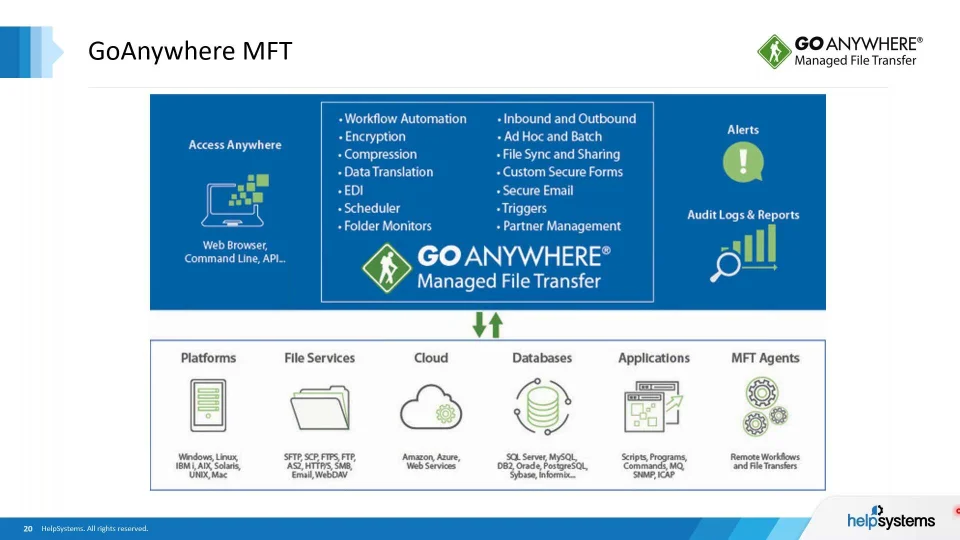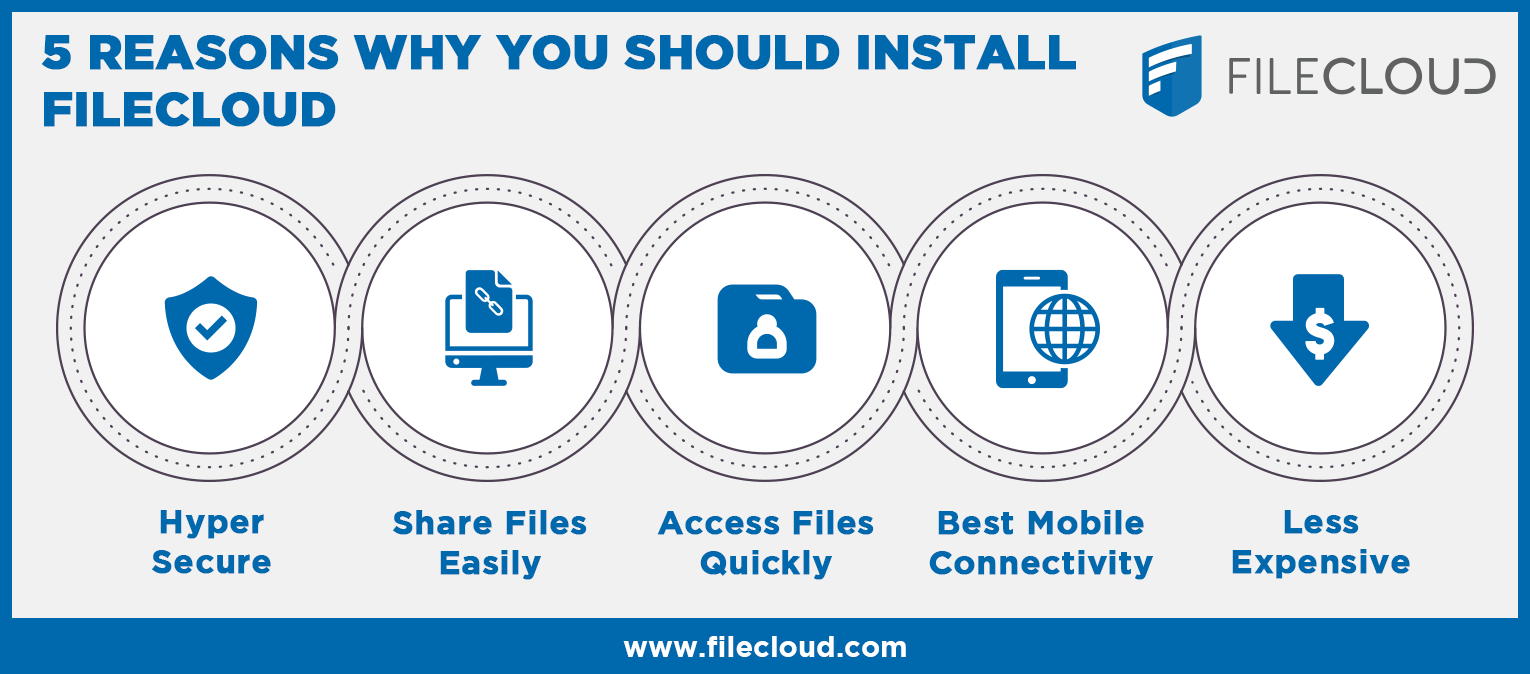Antwort What is replacing FTP? Weitere Antworten – What should FTP be replaced with

Following are the leading FTP replacement solutions.
- SFTP (SSH File Transfer Protocol)
- FTPS (File Transfer Protocol over SSL/TLS)
- AS2 (Applicability Statement 2)
- HTTPS (Hypertext Transfer Protocol Secure)
- MFT (Managed File Transfer)
- Secure cloud file sharing.
Five Alternatives to FTP
- SFTP. SFTP, which is short for SSH File Transfer Protocol, is a secure alternative to FTP that's built on top of the SSH protocol.
- FTPS. FTPS is a secure FTP protocol.
- AS2. AS2, which is short for Application Exchange 2, is a proprietary protocol developed by IBM.
- HTTPS.
- MFT.
For secure transmission that protects the username and password, and encrypts the content, FTP is often secured with SSL/TLS (FTPS) or replaced with SSH File Transfer Protocol (SFTP).
Does HTTP replace FTP : Ultimately, FTP is more efficient at transferring large files, whereas HTTP is better for transferring smaller files such as web pages. Although both utilize TCP as the protocol of choice, HTTP uses a persistent connection, thus making the performance of the TCP better with HTTP than with FTP.
Is FTP still relevant
Is FTP Still Used In short, yes, people are still using FTP sites to send and receive files. However, the original file transfer protocol (FTP) is unencrypted and it's not a file-sharing solution designed for today's more advanced security standards or compliance requirements.
Why is FTP outdated : Because FTP alone does not provide encryption, hackers can easily intercept transferred data with little to no effort. In addition, the FTP protocol uses an outdated user-password scheme for authenticating users to the server.
Is FTP Still Used In short, yes, people are still using FTP sites to send and receive files. However, the original file transfer protocol (FTP) is unencrypted and it's not a file-sharing solution designed for today's more advanced security standards or compliance requirements.
Many established frameworks still mandate the use of SFTP for specific types of data transmission. Additionally, there are many other compliance frameworks that recommend or require secure data transmission methods, including Secure File Transfer Protocol (SFTP).
Why avoid FTP
It is generally considered to be an insecure protocol because it relies on clear-text usernames and passwords for authentication and does not use encryption. Data sent via FTP is vulnerable to sniffing, spoofing, and brute force attacks, among other basic attack methods.Given that the majority of file download activity on the internet has moved to HTTP/S, wwPDB plans to deprecate FTP download protocol on November 1st 2024 (see previous announcement). Support for the RSYNC protocol, which offers additional functionality, will continue to be maintained.FTP isn't convenient.
However, while “FTP clients” in general, which includes FTPS or SFTP capabilities are not as convenient as say a web browser, they still have the advantage of being able to automate file transfers and remote-to-local file synchronization.
Mismatched Quotes or Brackets: The file contains mismatched quotation marks, brackets, or other delimiters, which can confuse the SFTP server's parsing mechanism and result in an "illegal quoting" error. File Corruption: The file may be corrupted or improperly formatted, leading to errors during the upload process.
Is FTP outdated : Is FTP Still Used In short, yes, people are still using FTP sites to send and receive files. However, the original file transfer protocol (FTP) is unencrypted and it's not a file-sharing solution designed for today's more advanced security standards or compliance requirements.
Is FTP obsolete : Is FTP Still Used In short, yes, people are still using FTP sites to send and receive files. However, the original file transfer protocol (FTP) is unencrypted and it's not a file-sharing solution designed for today's more advanced security standards or compliance requirements.
Is SFTP dying
SFTP is still relevant in 2023 and is the only file transfer protocol that features inherent forward secrecy.
Three common protocols still used in file transfer today are FTP, FTPS, and SFTP. While the acronyms for these protocols are similar, there are some key differences among them, in particular, how data is exchanged, the level of security provided, and firewall considerations.FTP is the traditional file transfer protocol. It's a basic way of using the Internet to share files. SFTP (or Secure File Transfer Protocol) is an alternative to FTP that also allows you to transfer files, but adds a layer of security to the process.
Does anyone still use FTP : While organizations still opt to use FTP, this protocol was never intended to be used in 2019. Other file transfer protocols, like FTPS, SFTP, HTTPS, and AS2, have since been created to replace FTP and protect data in transit between recipients.







